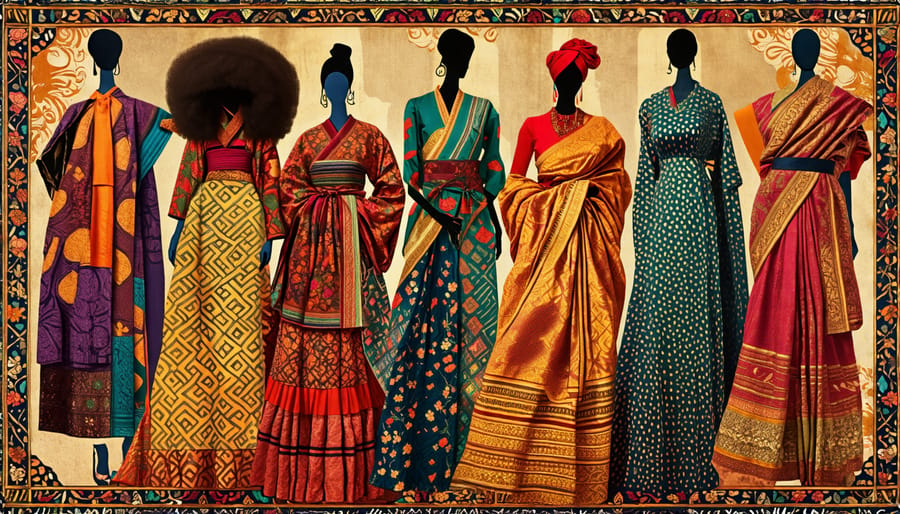Fashion is more than just getting dressed — it’s a form of expression that bridges the gap between identity, craft and cultural context. From ceremonial wear to contemporary runway fashions, the clothes we wear define who we are and is a way to bridge the gap between various cultures across the globe. It is a form of commerce that combines art and culture and is always contingent on the societies in which it makes its home.
What is Fashion?
Fashion is the popular style of the time, clothing, footwear, lifestyle, accessories, makeup, hairstyle, and body. It is more than just about functionality and convenience; it is beauty, self-expression, and what’s in. Fashion is a personal and collective means of exhibiting personality and conforming to greater cultural trends.
The Evolution of Fashion
Fashion has evolved remarkably over the centuries:
- Civilizations: Clothing was more about necessity, but also symbolism. Now there are the wraps the Egyptians used, the Greeks and the Romans, for the status symbols of the draped material.
- Middle Ages: Fabric, and colors revealed social status, intricate designs for the royal family.
- Fashion during the Renaissance and Baroque Eras If we became creative we started to look a lot more fancy with the influence of art, money and everything stinky.
- 19th Century: The industrial revolution brought mass produced clothing and fashion to the masses.
- Modern times: Fashion is a fast-moving, wide-ranging parade of looks, thanks to globalization, technology and pop culture.
The Influence of Fashion on Society
- Fashion is about much more than just the way you look, it also pertains to the way you live and to your lifestyle, which includes your identity and what culture you belong to.
- Self-expression – Fashion enables people give a voice to personality, mood, and values.
- Cultural Identity – Traditional Dress Traditional dress helps to keep your heritage or where you come from, and shows local customs.
- Economic Impact – The fashion industry is worth billions of dollars and jobs globally.
- Social Influence —Society forms the way people think and behave.
- Innovation – Designers play around the fabrics, tones and technology to stretch limits.
- Streetwear for instance, has gone from the culture of urban youths to now a worldwide culture that encompasses comfort, style and creativity.
Types of Fashion
There are different classifications of fashion:
- Haute Couture: One of a kind luxury designs made by hand.
- Ready-to-Wear: clothing made for standard sizes and not in small numbers for specific individuals.
- Streetwear: Clothign that is casual trendy and influenced by urban and youth culture.
- Fast Fashion: Cheap and in vogue, quickly replicating trends.
- Sustainable Fashion: Clothes that are eco-friendly and made ethically to minimize harm to the environment.
Modern Fashion Trends
- Fashion is influenced by social media, technology and evolving lifestyles. Current trends include:
- Sustainability – Increasing interest in sustainable materials and responsible production.
- Unisex Wear – Destabilizing Gender By Blurring Its Definition.
- Digital Fashion – Virtual clothes to wear on online platforms and in game worlds.
- Minimalism – Classic and simple designs over uber complex ones.
- – Collaborative Cultural Building – A synergy between old and new garment creation.
Challenges in the Fashion Industry
- The fashion industry is, for all its innovation, confronted with:
- Environmental Impact – Fast fashion is also one of the causes of waste and pollution.
- Labor Issues – There are terrible conditions for many workers in poor countries.
- Overconsumption – Fast fashion drives excessive purchasing behaviour due to the pace of trend cycles.
- Cultural Appropriation – If you use something from a culture and don’t do it respectfully, you might get into trouble.
- To address these issues, a growing number of brands are embracing “slow fashion” and prioritizing quality over quantity.
Careers in Fashion
- And fashion is not just clothes, check out the-following careers in the fashion industry!
- Designers and stylists
- Models and photographers
- Fashion marketers and content creators
- Fashion journalists and bloggers
- Today, online influencers also make a big impact by helping define and share trends with the world in real-time.
Conclusion
Fashion is fluid and constant and is a projection of individuality, culture and creativity. It gives people a way to show who they are, connects communities and even helps boost the economy. “Every time society changes, you see also fashion evolving, embracing elements such as sustainability, innovation, and digitalization.
At the end of the day fashion is about so much more then just following trends, it is about making a style our own that belongs to us and speaks to who we are, our culture and the world we live in. It’s possible, by balancing creativity with a sense of responsibility and purpose, for the fashion world to still be one that continues to inspire and unite and inform the future of how we dress and express ourselves.
